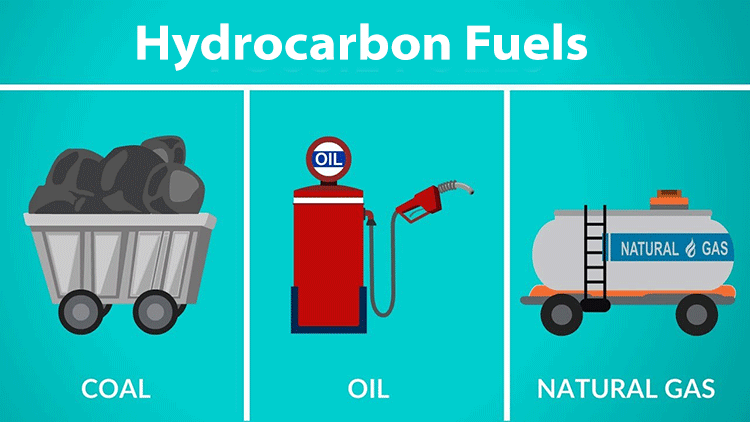Benchmark Report Throws Cold Water on Claims of a Transition Away From Fossil Fuels
Editor's Note: One of the many false narratives we've all been brainwashed with from birth is the notion that coal, oil, and natural gas are "fossil fuels", ie. somehow created from decaying dinosaurs. Like most of the massive LIES we have been fed, it's patently absurd. A lie concocted to manufacture the perception of scarcity to control the false perception of supply and demand to control prices, to manipulate markets. Check out our videos on the topic here.

Of that 620 exajoules consumed globally last year, 196 came from oil,
164 came from coal, and 144 came from natural gas,
according to the 2024 “Statistical Review of World Energy."
All renewables, excluding hydroelectric, was 8.2% of the total.
The latest figures on the globe’s energy mix dispute claims that the world is quickly transitioning off of fossil fuels.
According to the latest version of the “Statistical Review of World Energy,” coal, natural gas and oil remained the dominant source of energy in 2023, and coal consumption and production hit record highs.
Mark Mills, senior fellow with the National Center for Energy Analytics, told Just the News that he didn’t find the data on hydrocarbon use — another name for fossil fuel — surprising.
He’s been predicting for years that, despite claims to the contrary, use and production of fossil fuels would go up as energy demand rises.
“This is not a blip. It’s a feature of society, not a bug,” Mills said.
Eighteen zeros
Widely considered the benchmark source for data on energy trends across the globe, the “Statistical Review” has been published every year since 1952. The report was originally produced by BP, until the British energy company announced last year it was passing off the task to the Energy Institute, a United Kingdom-based energy nonprofit.
According to this year’s “Statistical Review,” the world consumed 620 exajoules of primary energy. Primary energy is energy in its rawest form, which can then be used to produce other energy forms. For example, coal is a primary energy source that can be used to create electricity.
A joule is roughly the amount of energy needed to lift a stick of butter 39 inches high. One hundred joules delivered for 1 hour can power a 100-watt light bulb for one hour. And 620 exajoules is 620 million trillion, or 620 followed by 18 zeros.
Of that 620 exajoules consumed globally last year, 196 exajoules came from oil, 164 exajoules came from coal, and 144 exajoules came from natural gas, according to the 2024 “Statistical Review.” Another 25 exajoules were produced by nuclear reactors, 40 exajoules were produced by hydroelectric facilities, and 51 exajoules were produced by renewables other than hydroelectric, which includes wind and solar energy.
Coal
In 2023, coal production reached its highest level in the history of the report, hitting 179 exajoules, and energy consumed from coal increased 1.6% over 2022, which was seven times higher than the previous ten-year growth rate. While China was the world’s largest consumer of coal energy, India consumed more energy from coal than North American and Europe combined.
The U.S. produced 526.5 million metric tons of coal in 2023, and 230 million tons of that came from Wyoming, the largest coal-producing state in America. While the globe gobbles coal in increasing amounts every year, according to the “Statistical Review,” coal consumption in both Europe and North America fell below 10 exajoules — the lowest levels since 1965.
Travis Deti, executive director of the Wyoming Mining Association, told Just the News that coal is going to appeal to developing countries like India because it’s affordable, abundant and reliable.
“The world wants what the United States has, and what we have was built on coal. And now they’re going for it,” Deti said.
He said that Wyoming coal producers have had conversations with importers in China, Korea, Japan and Vietnam about buying Wyoming coal, but the export capacity on the West Coast is highly limited.
Wyoming had pursued an export terminal in Washington state that would have opened up markets in Asia, but in 2017, Washington denied a permit for the export dock, arguing it would cause environmental harm to the Columbia River. Wyoming and Montana tried to sue Washington, arguing that the permit denial violated the U.S. Constitution’s prohibition against trade protectionism between states. The U.S. Supreme Court ruled in 2021 that it wouldn’t allow the suit to go forward.
“The environmental movement controls the West Coast, and we just cannot get our coal off the West Coast right now,” Deti said.
He said it wasn’t a win for the environment. Asia was going to increase its coal consumption, but rather than using Wyoming coal, which is very low in sulfur and other harmful pollutants, they’re using dirtier coal. According to the “Statistical Review” India and China source much of their coal from Indonesia, Australia and Russia.
“We have the [mining] capacity to meet demand overseas. It's unfortunate we are where we are today because of misguided politics,” Deti said.
The U.S. does export coal to countries around the world, including China and Asia, but in terms of export volume, America exports just a fraction of what comes out of Indonesia, Australia and Russia.
Oil and gas
Global oil production increased by 1.8 million barrels per day last year, reaching a record high of 96 million barrels per day, according to “Statistical Review.” The U.S. remained the largest producer and increased its output by over 8%.
In 2022, the report states, consumption of oil and biofuel products, such as ethanol and renewable diesel, exceeded 100 million barrels per day for the first time. In 2023, consumption of petroleum oil products alone exceeded that amount.
Natural gas demand increased by 0.02%, only slightly above pre-pandemic levels, and production in 2023 remained stable.
Total primary energy consumption in 2023 increased by 2%, according to the “Statistical Review,” and as a share of the total primary energy, fossil fuel consumption dropped 0.4% in 2023 to 81.5%.
Mills said that should the amount of fossil fuel consumption decline, it’s going to be far into the future. He said the portion of energy supplied by coal, oil and natural gas may decline as a share of the total, but the volume will go up. Demand for energy will grow, he said, and countries will seek out the cheapest and most available energy source.
“The transition that people are babbling about is not a transition in quantities. It’s a transition of shares,” Mills explained.
Electricity demand has been flat in the U.S. for the past 15 years, but increases in data centers and manufacturing electricity usage will see demand grow by 90 gigawatts by 2030.
Because of its vast capacity to produce natural gas, the U.S. has been able to transition a sizable portion of its coal consumption to natural gas, but Mills predicts, as loads increase on the U.S. grid, the amount of coal consumption in the U.S. has reached its bottom.
Wind and solar
Wind and solar saw the largest year-over-year increases in capacity in 2023, according to “Statistical Review.” Combined, the two energy sources rose from 186 billion watts to 462 billion watts, a 67% increase. Solar accounted for 346 billion watts of the total, a 75% increase.
While wind and solar generation capacity increased as a percentage from 2022, it remains a small part of the total energy consumed on the planet. One watt equals one joule, so for comparison, the globe consumed 504 million trillion watts from fossil fuels.
The report also notes that greenhouse gas emissions from energy use, industrial processes, flaring and methane increased 2.1% from 2022, setting a new record.


















